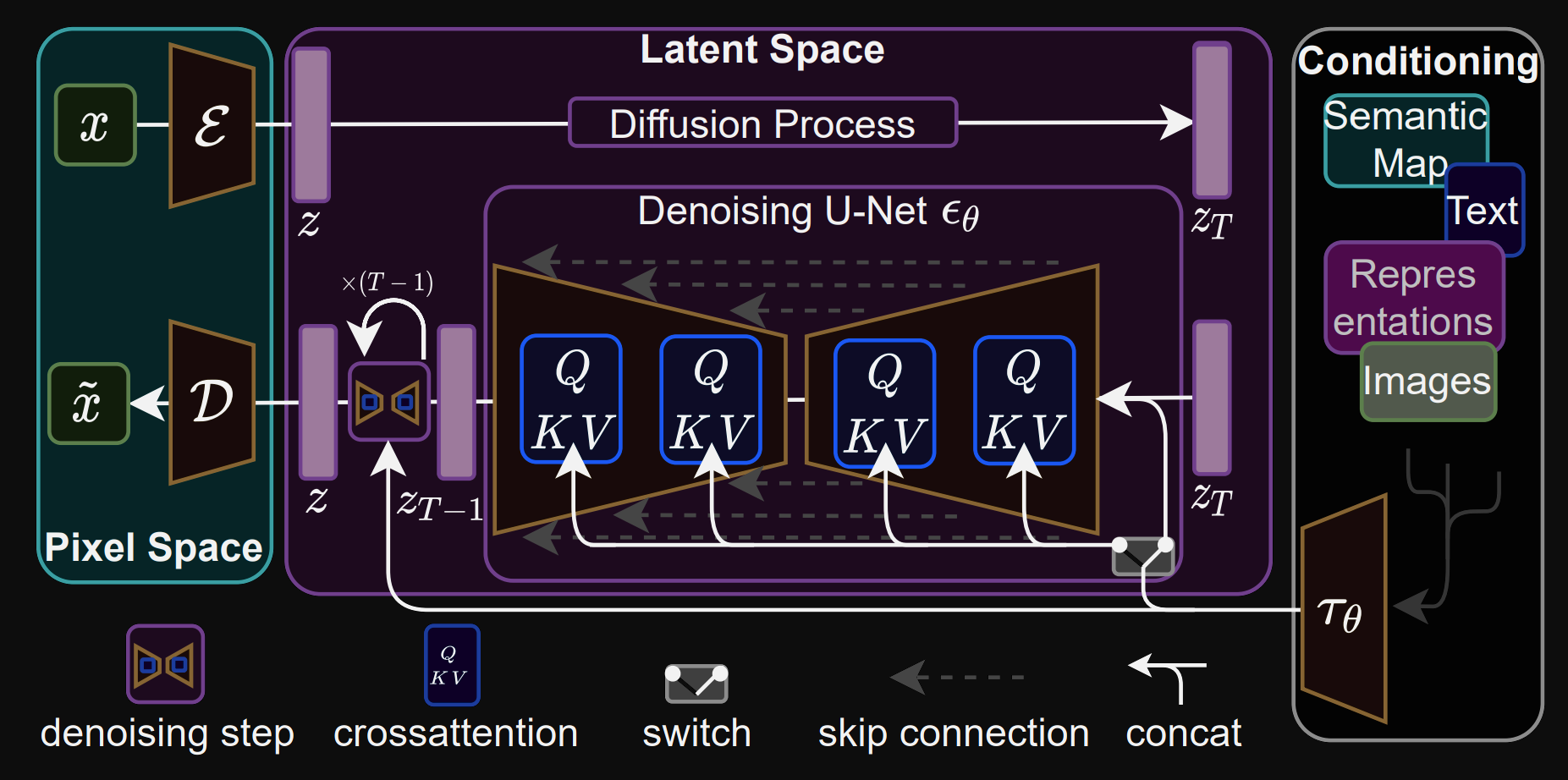1
2
3
4
5
6
7
8
9
10
11
12
13
14
15
16
17
18
19
20
21
22
23
24
25
26
27
28
29
30
31
32
33
34
35
36
37
38
39
40
41
42
43
44
45
46
47
48
49
50
51
52
53
54
55
56
57
58
59
60
61
62
63
64
65
66
67
68
69
70
71
72
73
74
75
76
77
78
79
80
81
82
83
84
85
86
87
88
89
90
91
92
93
94
95
96
97
98
99
100
101
102
103
104
105
106
107
108
109
110
111
112
113
114
115
116
117
118
119
120
121
122
123
124
125
126
127
128
129
130
131
132
133
134
135
136
137
138
139
140
141
142
143
144
145
146
147
148
149
150
151
152
153
154
155
156
157
158
159
160
161
| import torch
import torch.nn as nn
import torch.nn.functional as F
class Attention(nn.Module):
def __init__(self, in_dim, context_dim=None):
super().__init__()
self.to_q = nn.Linear(in_dim, in_dim, bias=False)
self.to_k = nn.Linear(
context_dim if context_dim else in_dim, in_dim, bias=False
)
self.to_v = nn.Linear(
context_dim if context_dim else in_dim, in_dim, bias=False
)
self.to_out = nn.Sequential(nn.Linear(in_dim, in_dim), nn.Dropout(0.0))
def forward(self, x, context=None):
q = self.to_q(x)
k = self.to_k(context if context is not None else x)
v = self.to_v(context if context is not None else x)
attn = torch.einsum("b i d, b j d -> b i j", q, k) * (x.shape[-1] ** -0.5)
attn = F.softmax(attn, dim=-1)
out = torch.einsum("b i j, b j d -> b i d", attn, v)
return self.to_out(out)
class GEGLU(nn.Module):
def __init__(self, in_dim, hidden_dim):
super().__init__()
self.proj = nn.Linear(in_dim, hidden_dim * 2)
def forward(self, x):
x_proj = self.proj(x)
x1, x2 = x_proj.chunk(2, dim=-1)
return x1 * F.gelu(x2)
class FeedForward(nn.Module):
def __init__(self, in_dim, hidden_dim):
super().__init__()
self.net = nn.Sequential(
GEGLU(in_dim, hidden_dim), nn.Dropout(0.0), nn.Linear(hidden_dim, in_dim)
)
def forward(self, x):
return self.net(x)
class BasicTransformerBlock(nn.Module):
def __init__(self, dim):
super().__init__()
self.norm1 = nn.LayerNorm(dim, eps=1e-5)
self.attn1 = Attention(dim)
self.norm2 = nn.LayerNorm(dim, eps=1e-5)
self.attn2 = Attention(dim, context_dim=768)
self.norm3 = nn.LayerNorm(dim, eps=1e-5)
self.ff = FeedForward(dim, 1280)
def forward(self, x, context=None):
x = self.attn1(self.norm1(x)) + x
x = self.attn2(self.norm2(x), context=context) + x
x = self.ff(self.norm3(x)) + x
return x
class Transformer2DModel(nn.Module):
def __init__(self, in_channels):
super().__init__()
self.norm = nn.GroupNorm(32, in_channels, eps=1e-6, affine=True)
self.proj_in = nn.Conv2d(in_channels, in_channels, kernel_size=1)
self.transformer_blocks = nn.ModuleList([BasicTransformerBlock(in_channels)])
self.proj_out = nn.Conv2d(in_channels, in_channels, kernel_size=1)
def forward(self, x, context=None):
b, c, h, w = x.shape
x_in = x
x = self.norm(x)
x = self.proj_in(x)
x = x.permute(0, 2, 3, 1).reshape(b, h * w, c)
for block in self.transformer_blocks:
x = block(x, context)
x = x.reshape(b, h, w, c).permute(0, 3, 1, 2)
x = self.proj_out(x)
return x + x_in
class ResnetBlock2D(nn.Module):
def __init__(self, in_channels):
super().__init__()
self.norm1 = nn.GroupNorm(32, in_channels, eps=1e-5, affine=True)
self.conv1 = nn.Conv2d(in_channels, in_channels, kernel_size=3, padding=1)
self.time_emb_proj = nn.Linear(1280, in_channels)
self.norm2 = nn.GroupNorm(32, in_channels, eps=1e-5, affine=True)
self.dropout = nn.Dropout(0.0)
self.conv2 = nn.Conv2d(in_channels, in_channels, kernel_size=3, padding=1)
self.nonlinearity = nn.SiLU()
def forward(self, x, time_emb=None):
h = x
h = self.norm1(h)
h = self.nonlinearity(h)
h = self.conv1(h)
if time_emb is not None:
time_emb = self.nonlinearity(time_emb)
time_emb = self.time_emb_proj(time_emb)[:, :, None, None]
h = h + time_emb
h = self.norm2(h)
h = self.nonlinearity(h)
h = self.dropout(h)
h = self.conv2(h)
return h + x
class Downsample2D(nn.Module):
def __init__(self, channels):
super().__init__()
self.conv = nn.Conv2d(channels, channels, kernel_size=3, stride=2, padding=1)
def forward(self, x):
return self.conv(x)
class CrossAttnDownBlock2D(nn.Module):
def __init__(self, in_channels=320):
super().__init__()
self.attentions = nn.ModuleList(
[Transformer2DModel(in_channels) for _ in range(2)]
)
self.resnets = nn.ModuleList([ResnetBlock2D(in_channels) for _ in range(2)])
self.downsamplers = nn.ModuleList([Downsample2D(in_channels)])
def forward(self, x, context=None, time_emb=None):
for attn, resnet in zip(self.attentions, self.resnets):
x = attn(x, context)
x = resnet(x, time_emb)
for downsampler in self.downsamplers:
x = downsampler(x)
return x
if __name__ == "__main__":
block = CrossAttnDownBlock2D(in_channels=320)
x = torch.randn(1, 320, 64, 64)
context = torch.randn(1, 77, 768)
time_emb = torch.randn(1, 1280)
output = block(x, context, time_emb)
print(f"输入形状: {x.shape} -> 输出形状: {output.shape}")
|
